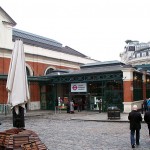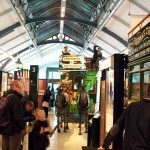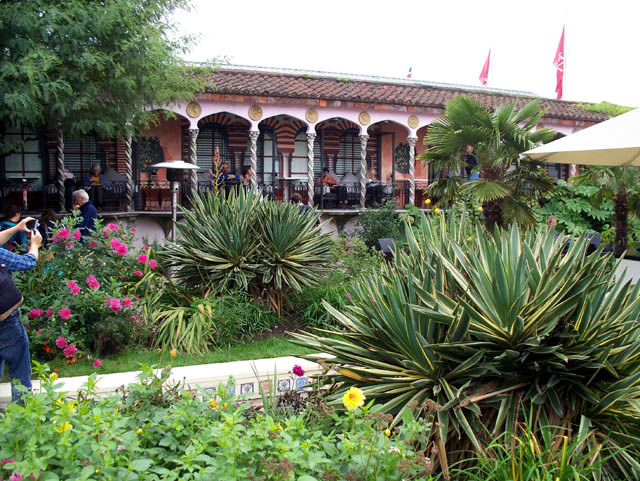
(Visited as part of “Open House London.”)
The Roof Gardens are best known to older visitors as the former Derry & Toms roof gardens, but have since 1981 been leased by Sir Richard Branson’s Virgin Group and are known as the Roof Gardens and Babylon Restaurant.
The Gardens are spectacular, with three themed gardens, Moorish themed structures, a stream and ponds, and resident flamingoes and ducks.
The Gardens were listed as a Grade II site by English Heritage in 1978.
The Roof Gardens and Babylon Restaurant and nightclub has its own website with pictures.
The public can visit the Gardens free of charge when they are not required for a function. They are accessible from Derry Street, through a doorway marked “99 Kensington High Street”.
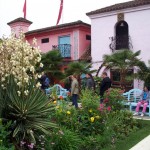
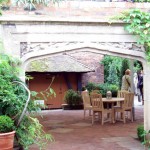
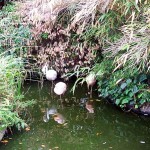
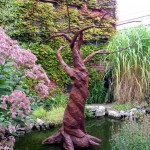
Category: London
Location
Romanian Cultural Institute, London
Private
(Visited as part of “Open House London.”)
A mansion, speculatively built in the 1840’s and designed by George Basevi in a sort of classical-lite style. It’s in Belgrave Square, and I visited it because it was across the road from the Argentinian Embassy.
Contains a very English-looking fine panelled room downstairs and a suite of fine rooms with a French look, upstairs. I watched an interesting film about the Carpathian countryside, and saw a display about pioneer Rumanian aviator Aurel Vlaicu.
There are several other embassies nearby.
Click on images to enlarge)
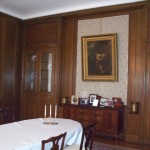
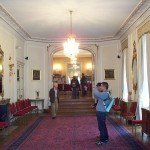
Argentine Ambassador’s Residence, London
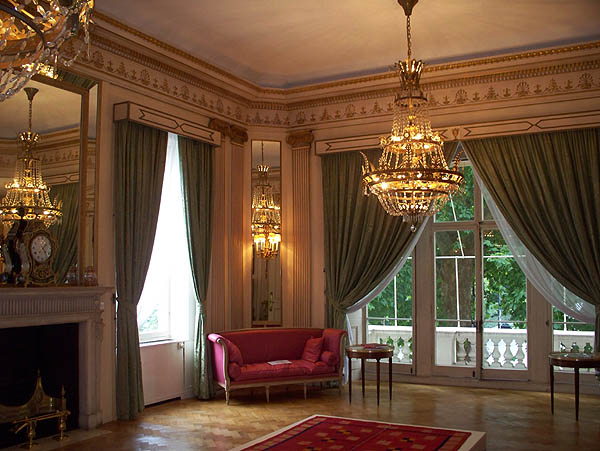 Private
Private
Visited as part of “Open House London.”
An elegant mansion at the north corner of Belgrave Square, speculatively built by Thomas Cubitt in the late 1840’s. It had been the scene of a number of political and cultural events, from the recruitment of nurses by Sidney Herbert for the Crimea, to being a haven for Argentinian volunteers during WWII.
During the Open House London weekend, the Residence had an exhibition of Argentinian textile art, as well as the permanent collection of interesting Eeropean and Argentinian art. The principal rooms are very opulent.
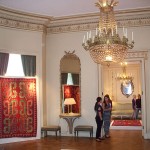
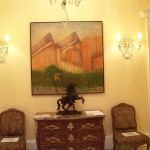
26 Whitehall and Admiralty House, London
Private
(Visited as part of “Open House London.”)
26 Whitehall was built in 1725, and houses the Admiralty Boardroom, still used by the First Sea Lord to direct the operations of today,s Royal Navy. The rest of the building is now used by the Department of International Development. The Boardroom contains notable wooden panelling, with a limewood centre-piece by Grindling Gibbons. There is also a wind dial connected to a vane on the roof, and various naval paintings and other artefacts.
The adjoining Admiralty House was built in 1785 as the residence of the First Lord of the Admiralty, and the ground floor contains an elegant suite of staterooms. There is a steep, doubly-wound stair lit by a elegant lunette.
Both buildings contain art and antiques from the MOD Art Collection. Well worth a look.
Not normally open to the public. Internal photography not permitted.
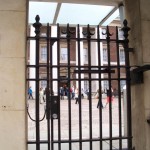
Banqueting House, London
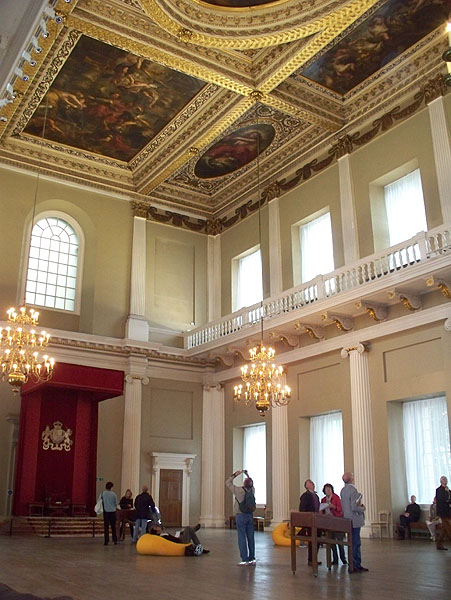 Historic Royal Palaces
Historic Royal Palaces
(Visited as part of “Open House London”)
Banqueting House, Whitehall is one of the first English Palladian style buildings, designed by Inigo Jones for James I and finished in 1622. It was intended for masques, receptions and entertainments, but was less used after the ceiling paintings by Peter Paul Rubens were installed in 1630-4. The smoke from candles during evening receptions had begun to damage the paintings.
The building is probably most famous as the scene of the execution of Charles I. It’s ironic that one of the last things Charles did was to walk under paintings glorifying the divine right of kings.
Regularly open to public -charges apply.
Well worth a look.
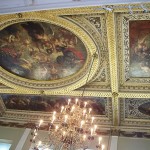
Wallace Collection, London
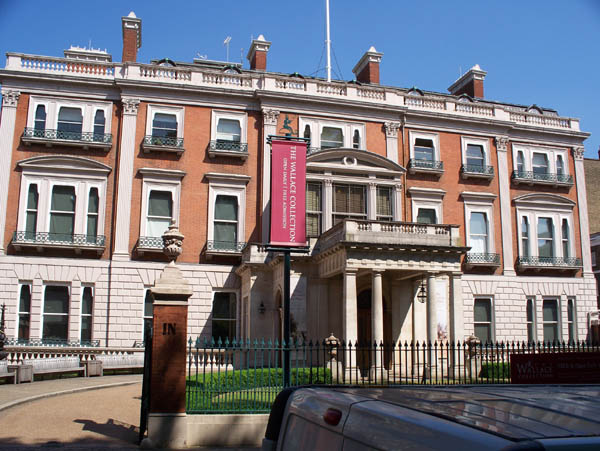
The Wallace Collection is a national museum in an historic London town house. In 25 galleries are unsurpassed displays of French 18th century painting, furniture and porcelain with superb Old Master paintings and a world class armoury.
The Wallace Collection is a family collection in origin, and is now owned by a private trust. Hertford House was formerly owned by the Wallace family. Its works of art were collected between about 1760 and 1880 by the first four Marquesses of Hertford and Sir Richard Wallace, the son of the 4th Marquess.
To the visitor, Hertford House seems like a combination of stately home and museum. In addition to the grand rooms, parts of the building that formerly housed stables etc have been converted to museum galleries.
The collections are world class and include well-known paintings such as the ‘Laughing Cavalier’ and ‘Girl on a Swing’, fine furniture, including several pieces that belonged to Marie Antoinette, fine porcelain and other art objects, and a large collection of medieval and Oriental arms and armour.
With one piece of furniture reputedly being worth several million pounds, one could guess that to repurchase the collection at today’s prices would cost the equivalent of the national debt!
I left the Collection unvisited for many years because it gets little publicity, and I supposed that a private collection would be rather dull – an impression that turned out to be totally wrong.
Admission is free, but you can buy a useful guidebook for £5. If you don’t know where to start, take the Highlights Tour (free).
For meals and snacks, there is a restaurant in the courtyard, but some visitors may find it a bit pricey (a cold drink and cake cost me nearly £6).
Visit time – to see everything takes most of a day. Nearest Tubes are Bond Street and Baker Street, but a bus will drop you nearer.
Kew Bridge Steam Museum, London
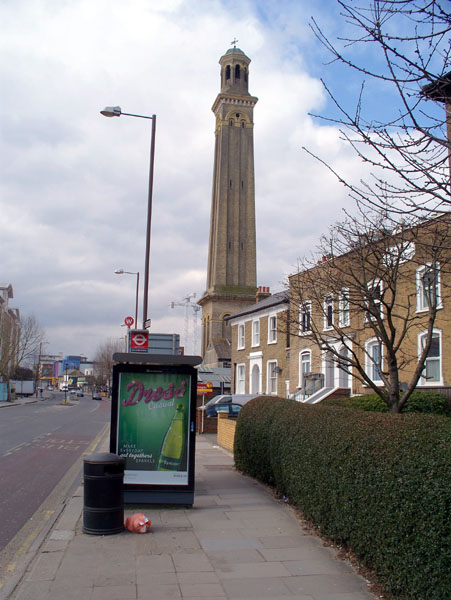
The Kew Bridge Steam Museum dubs itself ‘London’s Museum of Water Supply’. It is housed in the historic premises of the former Grand Junction Water Works Company. Several of the Company’s beam pumping engines are in their original positions. As the number of engines was increased over the years to meet demand, the engines are diverse, rather than being a matched set, as at, e.g. Crossness. The Museum also houses several collected steam pumping engines from elsewhere, and one original and several collected diesel pump engines.
The 90 inch and 100 inch engines (original) are so big that the visitor is obliged to stand inside the engine mechanism rather than beside it.
The tower is not a chimney, but contains a pressure-balancing water standpipe.
Most of the engines are in working order, and a selection of them can be seen running on ‘steam’ weekends. It’s worth going on a weekend when the engines are being run in turn, if you can. I spent over four hours at the site on my visit.
If you are interested in steam power and industrial archaeology this is well worth a visit.
The Museum is a few minutes’ walk from Kew Bridge railway station. On-site parking is limited.
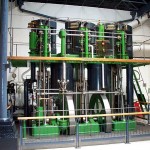
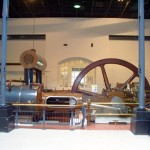
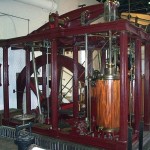
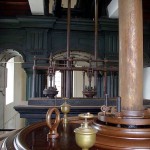
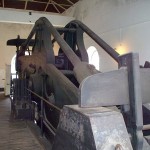
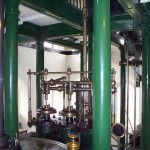
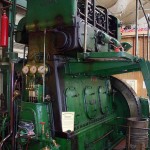
Carlyle’s House
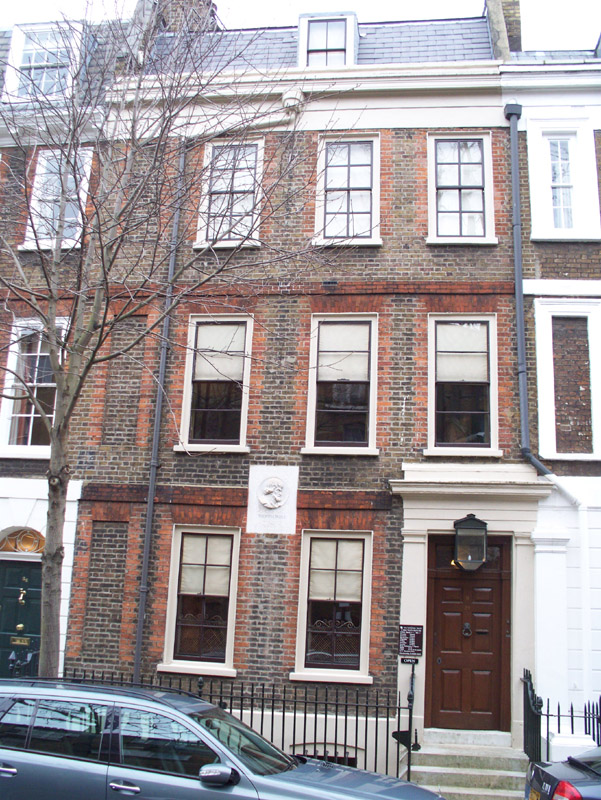
National Trust
The house in Chelsea was rented for over 40 years by the Scottish writer Thomas Carlyle and his wife Jane. They were visited there by many of the famous literary names of the Victorian era. Nowadays, Jane Carlyle’s lively letters are probably more widely read than Thomas Carlyle’s multi-volume histories.
Not long after Carlyle died, the freehold of the property was acquired for a museum to commemorate Carlyle. The National Trust took over the property in 1936 and over the years many of the Carlyles’ possessions have been returned to the house. The house is largely unaltered and is presented much as it would have looked when the Carlyles lived there. On the top floor is a study, windowless except for a skylight, where Carlyle did much of his writing. It was designed to be soundproof, but it seems this was not a success.
In each room there are several cards with information about the Carlyles and their famous friends and visitors.
In the basement is the kitchen, and there is access to the rear garden. Even if you don’t know much about Carlyle, it is interesting as a Victorian middle-class house.
Nearest tube stations are South Kensington and Sloane Square (1 mile) and there are buses to Carlyle Square on the King’s Road (1/4 mile)
On foot it is easiest to find Cheyne Walk at the river, then the Carlyle statue and Cheyne Row.
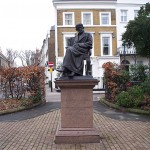
London Transport Museum
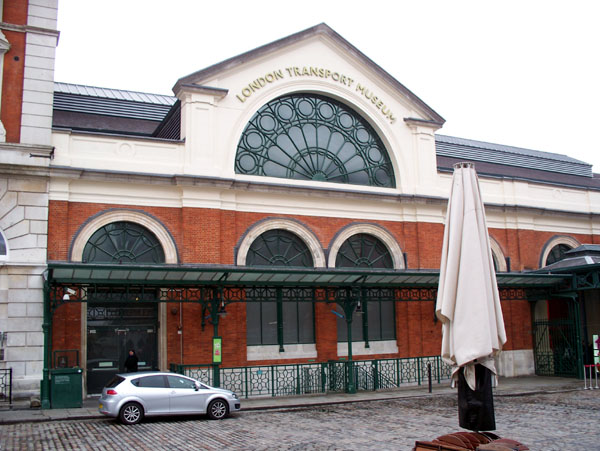 The London Transport Museum, Covent Garden, is devoted to the history of London Transport. As well as storing and displaying historic vehicles, it informs about the history and development of the Tube and bus services, and the former tramway and trolley-bus services. Social history is also strongly presented, and the impact of the suburban railway services on the sprawl of London. It was mainly the poor who were displaced (and not re-housed) when large acreages were cleared to make way for railway cuttings, stations and depots.
The London Transport Museum, Covent Garden, is devoted to the history of London Transport. As well as storing and displaying historic vehicles, it informs about the history and development of the Tube and bus services, and the former tramway and trolley-bus services. Social history is also strongly presented, and the impact of the suburban railway services on the sprawl of London. It was mainly the poor who were displaced (and not re-housed) when large acreages were cleared to make way for railway cuttings, stations and depots.
A visit starts at the top of the building, with a sedan chair and horse-drawn buses. The next level down is devoted to the steam underground and the growth of the suburbs, and across a walkway is an area for temporary exhibitions. The main floor has a variety of exhibits including motor buses, Underground vehicles, the Underground at war etc.
During my visit there was a temporary exhibition of Underground posters, many being of artistic merit.
Exhibits of note: Steam loco designed for underground working. Two early electric locos. ‘General’ early motor bus.
The Museum is of medium size – it took me 3 to 3 1/2 hours to see almost everything. The admission charge seems on the high side at £15 for adults. Almost all displays are in English only. Access: most visitors will come by public transport. Nearest tube is Covent Garden, but if you travel by Northern line, it’s probably not worth the bother of changing lines to travel the short distance to Covent Garden and then queuing for the lifts – just walk the 1/4 mile up Long Acre instead. From Covent Garden tube station, the Museum is almost on the far side of the Piazza – walk round clockwise and you’ll see it.
Leighton House Museum, London
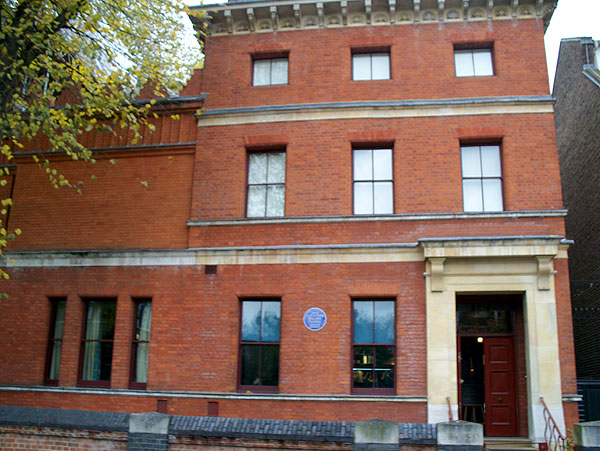
National Trust.
Leighton House was the home of eminent Victorian painter Frederic, Lord Leighton. The interiors have been restored to match their original appearance as closely as possible. The interior of the house is striking. The stairwell hall is tiled with colored tiles. There is an Arab Hall, also tiled, that is two floors high and is topped by a dome visible from the street. Upstairs, the artist’s studio is the size of a baronial hall and has three fireplaces. Remarkably, there was only one bedroom.
Visitors may notice downstairs a couple of fireplaces under windows, that seem to have no chimney breast. Apparently, in the case of the dining room, the flue is in the wall to one side.
The house originally displayed Leighton’s art collection, but this was dispersed after his death in 1898. A few items have been returned to the house, and replicas or similar objects substituted for others.
If you like Victoriana, a visit here is highly recommended. Note that, as the house is owned and operated by the Royal Borough of Kensington and Chelsea, even NT members have to pay, but get a 50% discount.
The house is regularly used for art exhibitions, in the house itself and/or the attached gallery.
The house is near the south end of Holland Park, and the ‘nearest’ Tube stations are High Street Kensington and Holland Park, both at least 15-20 minutes walk away.

